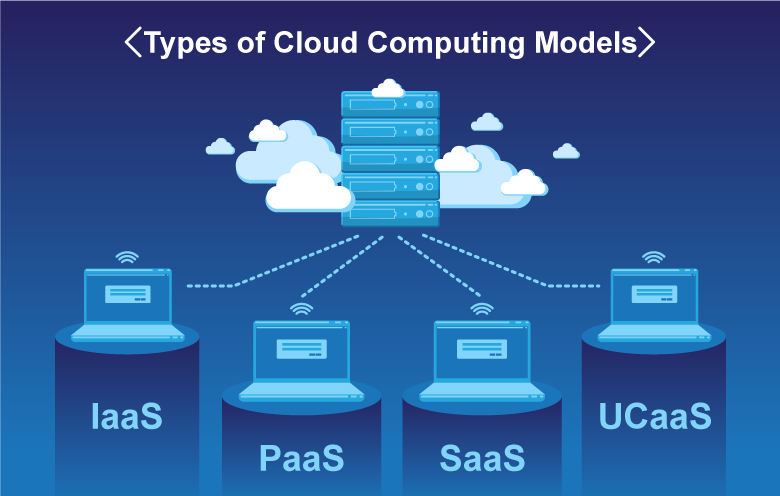LinkDaddy Cloud Services Press Release: Announcing New Features and Perks
LinkDaddy Cloud Services Press Release: Announcing New Features and Perks
Blog Article
Drive Technology: Taking Advantage Of the Power of Cloud Solutions
In the busy landscape of modern-day business, harnessing the power of cloud solutions has actually ended up being an essential aspect for companies intending to drive advancement and keep a competitive side. The ability to scale sources dynamically, embrace advanced innovations flawlessly, and simplify advancement processes successfully can considerably impact an organization's ability to innovate and adjust. As we check out the complex partnership in between cloud solutions and technology, interesting insights on exactly how cloud remedies transform typical company techniques and pave the way for groundbreaking developments will be revealed.
Benefits of Cloud Services
Cloud solutions supply numerous advantages to people and companies seeking flexible and effective remedies for their electronic requirements. One of the crucial advantages of making use of cloud solutions is the cost-effectiveness they supply. By moving to the cloud, organizations can remove the need for costly on-premises equipment and upkeep costs, instead going with a pay-as-you-go model that lines up with use. This scalability enables services to adjust sources based on demand, resulting in optimum expense administration.
Furthermore, cloud services improve access and cooperation amongst groups. With information saved in the cloud, staff members can firmly access documents and applications from anywhere with an internet connection, promoting remote job capabilities and increasing performance. Real-time collaboration features allow numerous individuals to service files at the same time, cultivating seamless synergy regardless of physical location.
An additional advantage of cloud services is the improved data protection and calamity healing they use. Cloud service providers execute sophisticated safety and security steps to safeguard information from cyber risks, guaranteeing compliance with sector laws. Furthermore, automatic backups and recuperation remedies lessen the risk of information loss as a result of unanticipated events, providing comfort to customers.
Cloud Migration Methods
Transitioning to cloud solutions includes careful preparation and calculated execution to ensure a efficient and smooth migration procedure. There are several cloud movement techniques that companies can consider when relocating their operations to the cloud. One typical strategy is the 'Rehost' technique, where applications are raised and moved to the cloud with marginal changes. This technique fasts but might not totally maximize cloud benefits. The 'Replatform' strategy includes making some cloud optimizations during movement, such as upgrading the application style to take advantage of cloud-native functions. Cloud Services. For a more thorough change, the 'Refactor' strategy involves rearchitecting applications to be cloud-native, enhancing scalability and efficiency. In addition, the 'Repurchase' technique involves replacing existing software with cloud-based alternatives, while the 'Retire' method involves deactivating repetitive applications. Selecting the right movement strategy depends on aspects like price, timeline, and preferred results, needing a mindful analysis of each alternative's difficulties and benefits.
Enhancing Partnership in the Cloud
Enhancing team partnership with cloud-based devices can considerably increase efficiency and improve communication within organizations. By leveraging cloud solutions, groups can function together effortlessly no matter their physical areas, allowing real-time partnership on projects. Cloud-based communication devices such as Slack, Microsoft Teams, or Google Office offer a central system for staff member to share documents, exchange ideas, and coordinate tasks successfully. These tools supply functions like instant messaging, video conferencing, data sharing, and go to this website job management, enhancing synergy and minimizing dependence on conventional communication approaches like e-mails.

Security Factors To Consider for Cloud Adoption
Just how can organizations guarantee the durable safety and security of their information when embracing cloud solutions? Safety and security factors to consider are vital in the adoption of cloud services. To secure data, organizations have to initially perform a thorough risk evaluation to identify potential vulnerabilities and hazards. Executing solid file encryption approaches for data both in transit and at rest is vital. Access control devices need to be placed in place to limit unapproved entrance, and multi-factor verification can add an extra layer of protection. Regular security audits and monitoring of the cloud atmosphere assistance in discovering and minimizing any safety violations immediately.

Cloud-Native Advancement Practices
In the realm of cloud computing, accepting cloud-native technology methods is vital for companies making every effort to enhance their electronic infrastructure and enhance operational performance. Cloud-native technology techniques entail creating applications specifically for cloud settings, leveraging the scalability, versatility, and agility that cloud solutions use. By creating applications with cloud-native concepts in mind, such as microservices architecture, containerization, and orchestration, organizations can enhance their development processes, boost resource usage, and react a lot more properly to changing market needs.
Moreover, cloud-native technology practices advertise constant assimilation and continual shipment (CI/CD) pipes, making it possible for automated screening, release, and monitoring of applications. This repetitive approach cultivates faster technology cycles and enhances total software top quality. In addition, making use of serverless computing and managed solutions allows companies to concentrate on establishing core company capabilities while unloading facilities management tasks to shadow solution carriers.
In essence, accepting cloud-native technology practices empowers companies to drive technology, increase time-to-market, and remain affordable in today's rapidly advancing electronic landscape.
Final Thought

As we discover the elaborate relationship in between cloud services and development, fascinating insights on just how cloud solutions revolutionize standard service techniques and pave the way for groundbreaking innovations will certainly be exposed. - cloud services press release
There are numerous cloud migration techniques that organizations can take into consideration when relocating their procedures to the cloud. Cloud-native development techniques include developing applications especially for cloud environments, leveraging the scalability, versatility, and agility that cloud solutions provide. In addition, the usage of serverless computing and handled solutions allows organizations to concentrate on creating core business functionalities while unloading framework administration tasks to shadow solution carriers.
It is necessary for companies to think about cloud movement strategies, enhance partnership in the cloud, and focus on safety steps to make sure successful adoption of cloud services and drive development within their company.
Report this page